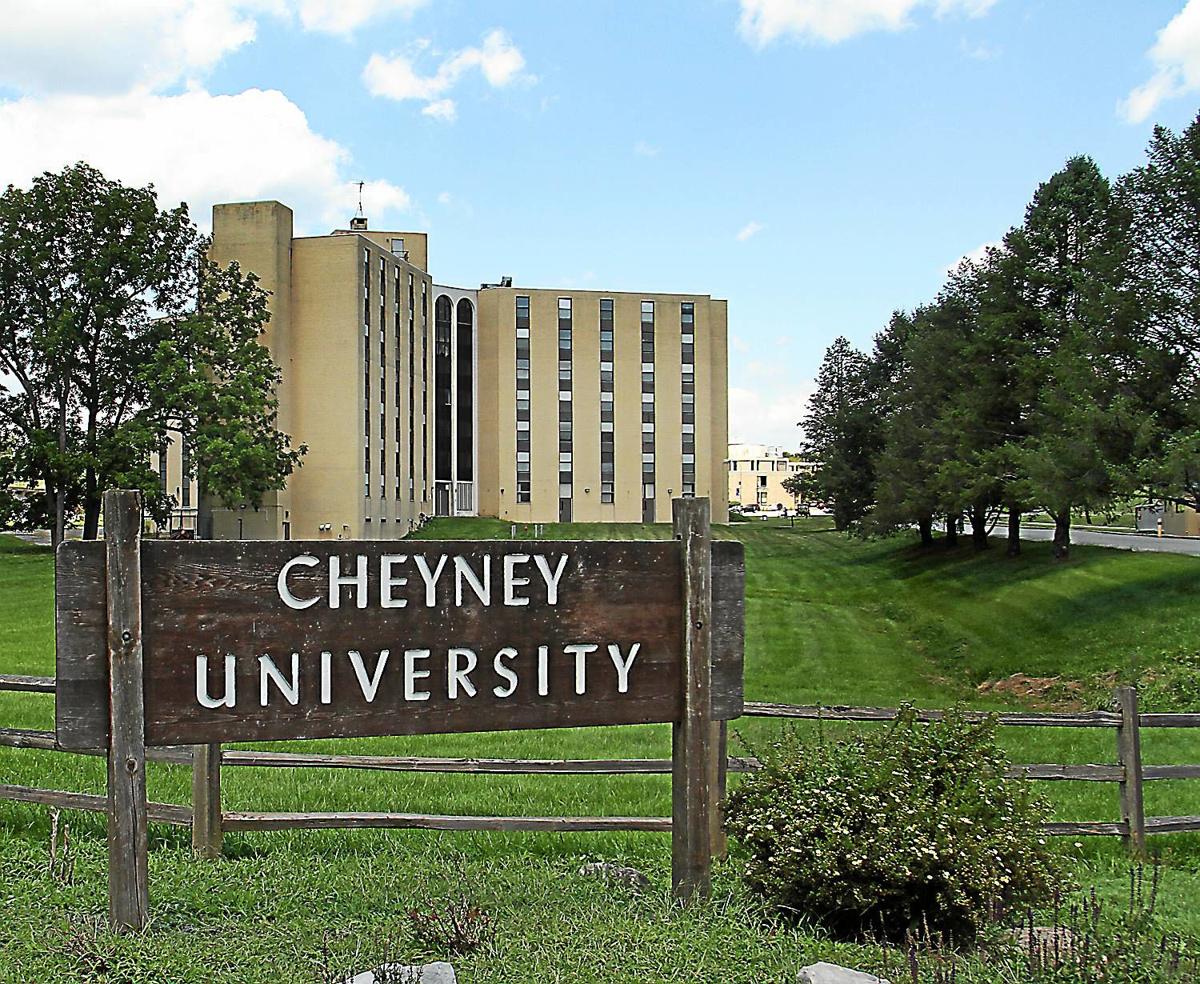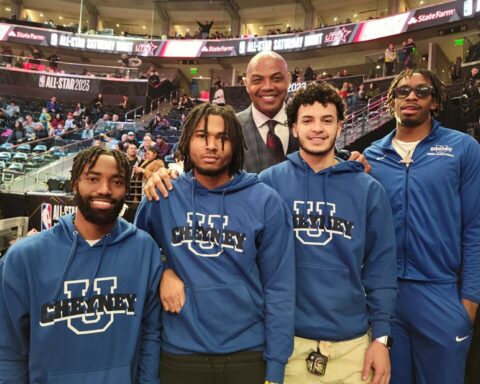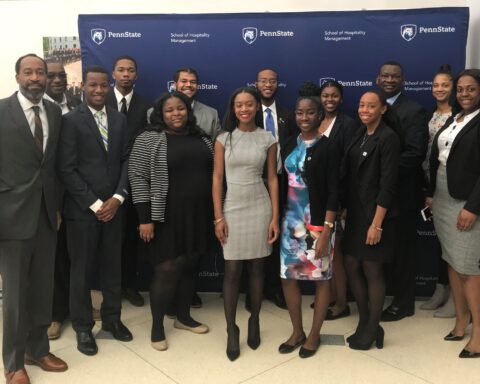Courtesy of Cheyney University
In their day jobs, Ernest Owens is Editor at Large at Philadelphia Magazine and Amanda VanAllen anchors the morning news on WPHL-TV. Both award-winning African American journalists have now brought their talent and experience to Cheyney University of Pennsylvania to share with students in the classroom.
Assistant Professor of Communication Arts Dr. Gooyong Kim said he wanted to bring in two active, accomplished professionals to provide a current perspective to the classroom.
“The mass media industry moves fast so we need to have not only the textbook perspective in the classroom, but we also need to have an up-to-date trend about the industry,” said Dr. Kim. “These two individuals are dynamic and energetic and use real-world current topics to keep students engaged. I believe this experience will motivate our students to pursue their academic and professional careers in this booming industry.”
VanAllen graduated from Oberlin College with a degree in African American Studies and English and earned her master’s degree in Broadcast Journalism/Reporting from New York University. She has worked professionally for ABC’s “World News Now” and in Long Island, Allentown, and Cleveland before coming to Philadelphia. VanAllen is teaching a broadcast news reporting course.
Owens earned his undergraduate degree in Communications from the University of Pennsylvania and recently completed a master’s degree from the University of Southern California in Communication Management. He frequently writes commentaries on timely pop culture issues impacting the Black community for TheGrio. He is teaching writing for print media.
Both agree that having working journalists who are also people of color in the classroom carries advantages for students.
“I am treating my classroom as a newsroom in the 21st century,” Owens says. “My students are encouraged to embrace social media. I have them using their phones and laptops in class. They’re discussing timely, relevant issues, and of course, mixing in academic theory. But they’re getting hands-on experience and real-life training to become journalists. This course is showing them how they can apply those skills in the most practical and impactful way.”
As president of the Philadelphia Association of Black Journalists, Owens is often pushing for diversity in newsrooms, but he says he realizes that is only part of the issue.
“The other part is who’s educating our students, and representation matters in that regard. So, I’m happy to be part of the solution both outside and inside the classroom.”
VanAllen noticed that none of the college students applying for internships at her TV station were from HBCUs. She contacted Dr. Kim to ask him to encourage Cheyney students to apply. Two months later, Kim called VanAllen to say her mission of lifting other people of color aligns with Cheyney’s mission and offered her the teaching opportunity.
“I think students can see through me that people are doing this work and it’s not just a concept; it’s a real job and real people do it, and it is attainable,” she said. “By having one of their professors say, ‘I just did this story this morning’ makes it feel more tangible and I think it gives them a little more authentic experience, knowing that they’re being taught by somebody who lives this experience every single day.”
VanAllen points to the term ‘Diversity and Inclusion’ as one that people throw around in journalism but have not fully understood. She thinks that is changing and that more people are starting to get it.
“It doesn’t just mean that we are putting people of color on the news; it also means that people of color need to be represented by the news. Their stories need to be told, but also people of color need to be the ones making decisions as producers, managers, and general managers of news stations. I think we’re starting to understand that a little bit more. And when we finally get it right, we will see better newscasts that actually give a sense of what these communities really look like.”
VanAllen, like Owens, believes incremental progress has been made but she said the industry has a long way to go, noting that the way the news business works now, Black and brown people are often depicted in negative ways.
“If someone is just bashing you all the time and somebody’s making you feel bad when you read or watch something, why would you ever want to be part of that industry? As a news business, we must do a better job of telling the full story of communities of color, and once we do that, we will start to bring in people who look like everyone. I hope to play a small part in that by being a professor at Cheyney, where most students are people of color. In my class, I think they will see that they can make a difference by telling stories of their communities, stories that are important and aren’t being told and that really matter,” VanAllen said.
Both Owens and VanAllen say while diversity in the newsroom is important, it is also important in academia. In fact, Owens said he had no Black journalism professors in college. He wants to be part of the change.
“To me, coming back as a practitioner in journalism and communications, I hope to be one of these students’ first Black male journalism professors,” Owens said. “I think our being in the classroom is already having a profound effect on how they envision their role in the field. Increasing diverse representation of journalism professors is going to have a lasting impact on the students.”
In addition to the courses, Owens and VanAllen are teaching, Cheyney added a new course this semester on the history of hip hop music. Dr. Kim created the course and is teaching it himself. He says hip hop, in the beginning, provided a means to protest the lingering societal problems in the U.S, such as poverty, racism, and violence, but as he teaches in his course, hip hop has moved a long way from its roots.
“Hip hop was co-opted and commercialized,” he said. “Unfortunately, most current hip hop perpetuates negative images and themes. This course chronicles the 40-year history of the genre, how it developed from the underground of New York City and how it became tainted, and the related problems in the hip hop culture.”





